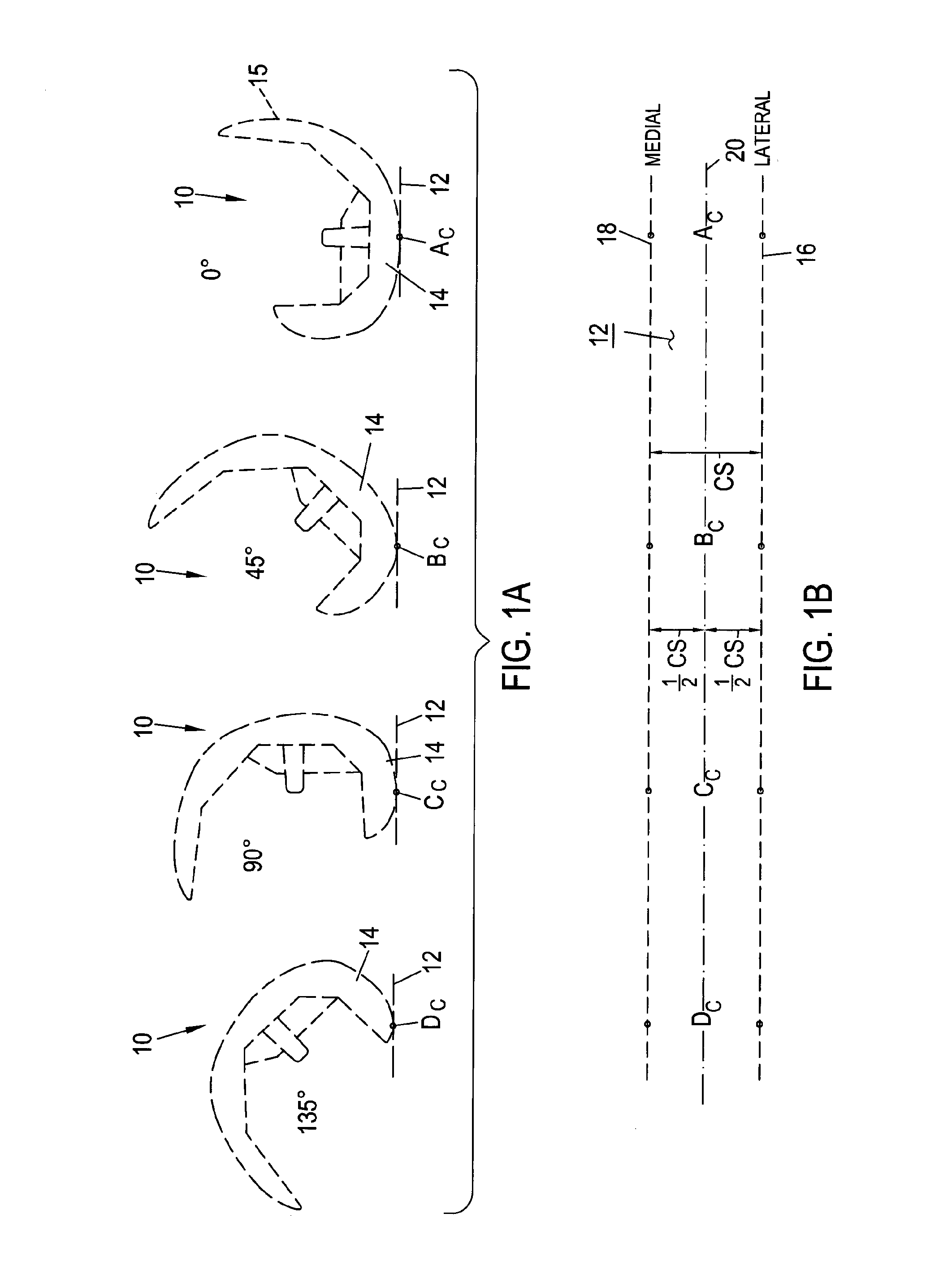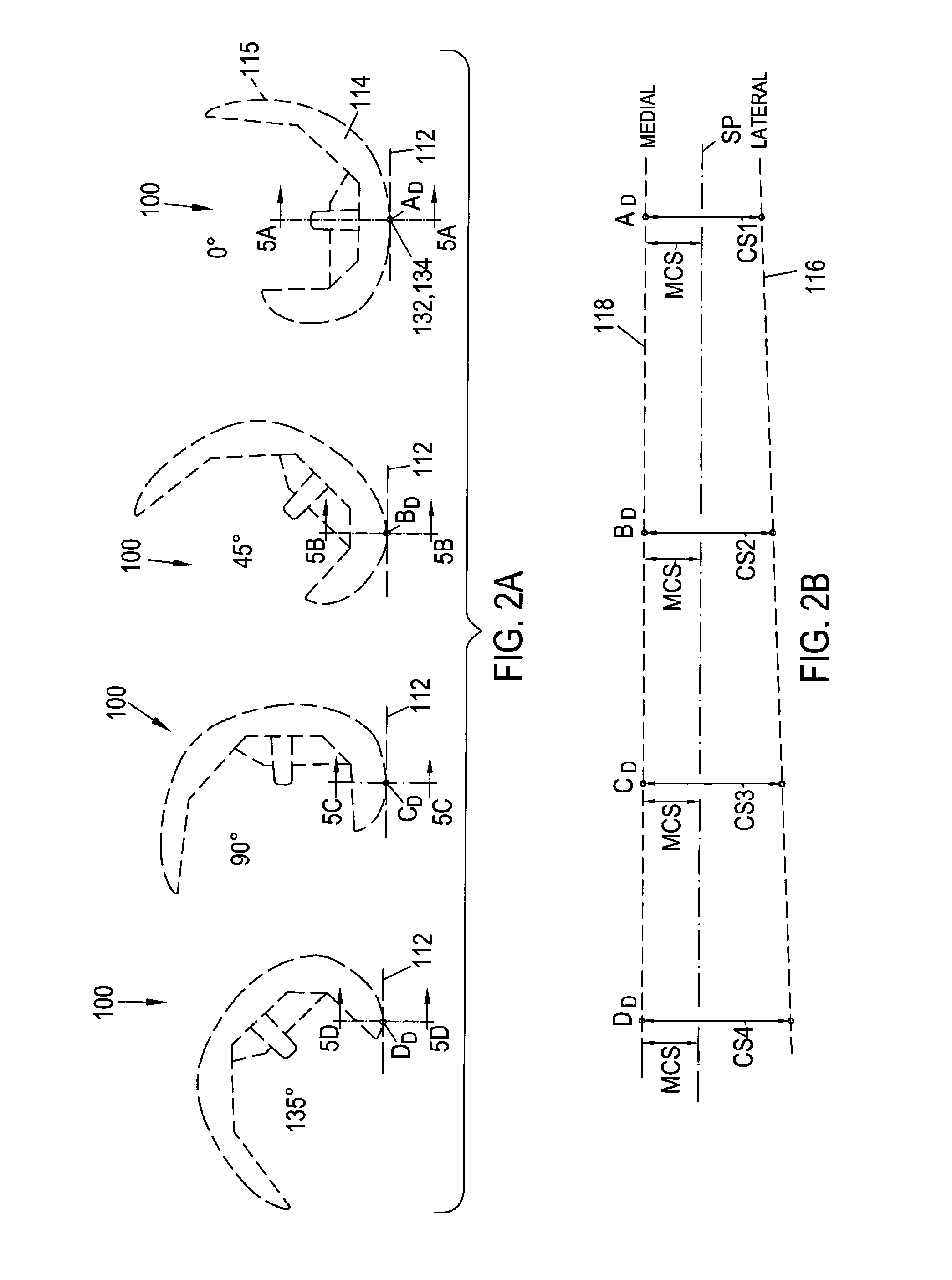Femoral knee prosthesis with diverging lateral condyle
a lateral condyle and femoral knee technology, applied in the field of orthopaedic prostheses, can solve problems such as femoral rollback, and achieve the effect of facilitating lateral condyle rollback
- Summary
- Abstract
- Description
- Claims
- Application Information
AI Technical Summary
Benefits of technology
Problems solved by technology
Method used
Image
Examples
Embodiment Construction
[0033]Turning to FIG. 1A, one type of femoral component 10 is shown from a sagittal viewpoint, with component 10 resting on flat surface 12. When component 10 is oriented in a position corresponding to zero degrees flexion, as shown on the right side of FIG. 1A, component 10 defines contact point AC between flat surface 12 and the distal-most point on the articular surface of lateral femoral condyle 14. As component 10 is rolled along flat surface 12 to position corresponding to about 45° flexion, femoral component 10 defines contact point BC between lateral condyle 14 and flat surface 12. Similarly, as femoral component 10 is rolled further upon flat surface 12 to positions corresponding to 90° flexion and 135° flexion, contact points CC and DC are respectively defined between respective posterior portions of condyle 14 and flat surface 12.
[0034]Applicants refer to contact “points” herein in the context of contact between femoral and tibial components. While it is appreciated that ...
PUM
 Login to View More
Login to View More Abstract
Description
Claims
Application Information
 Login to View More
Login to View More - R&D
- Intellectual Property
- Life Sciences
- Materials
- Tech Scout
- Unparalleled Data Quality
- Higher Quality Content
- 60% Fewer Hallucinations
Browse by: Latest US Patents, China's latest patents, Technical Efficacy Thesaurus, Application Domain, Technology Topic, Popular Technical Reports.
© 2025 PatSnap. All rights reserved.Legal|Privacy policy|Modern Slavery Act Transparency Statement|Sitemap|About US| Contact US: help@patsnap.com



